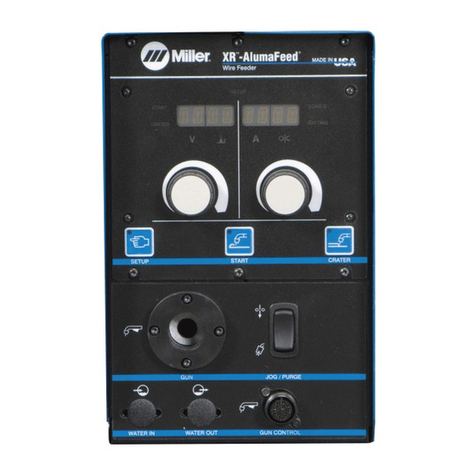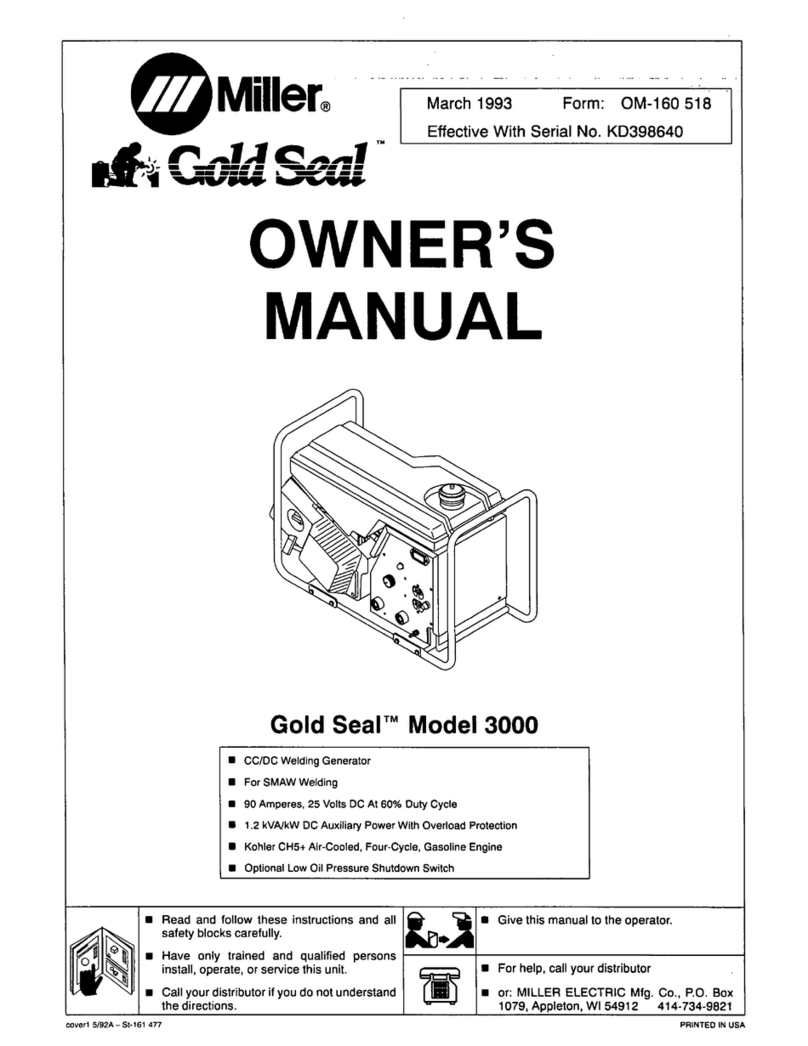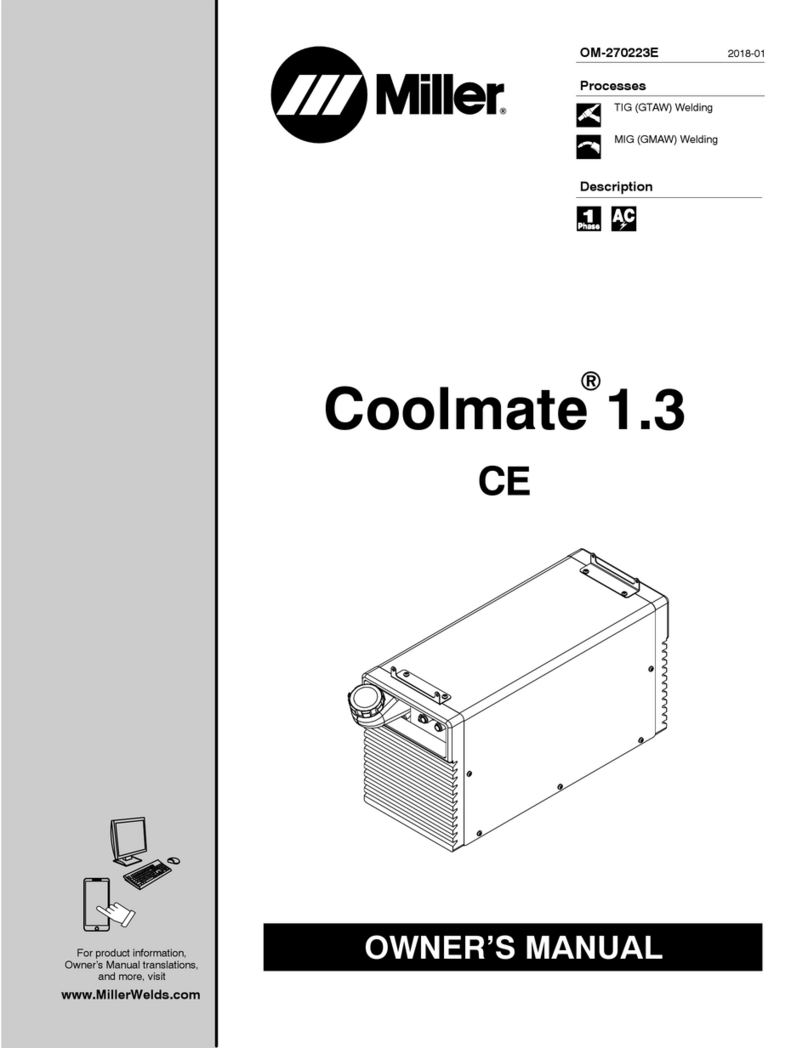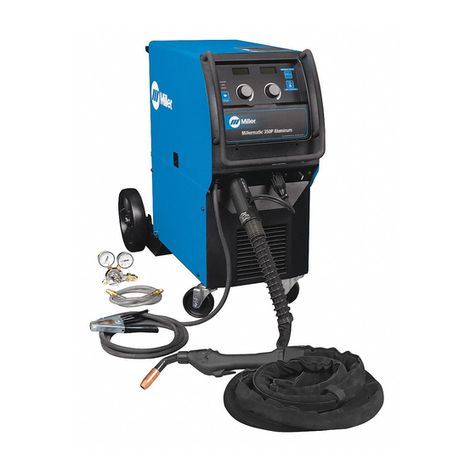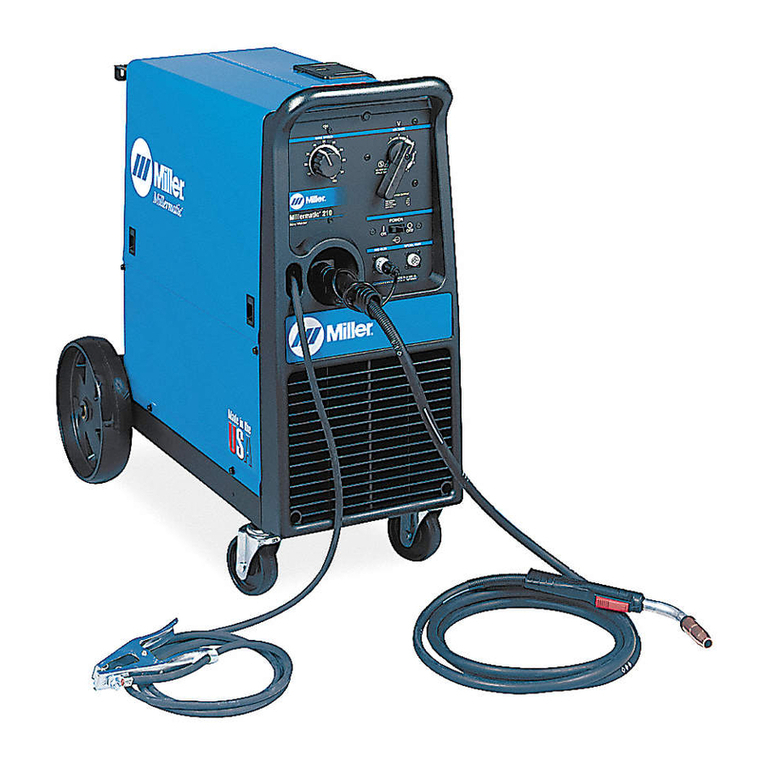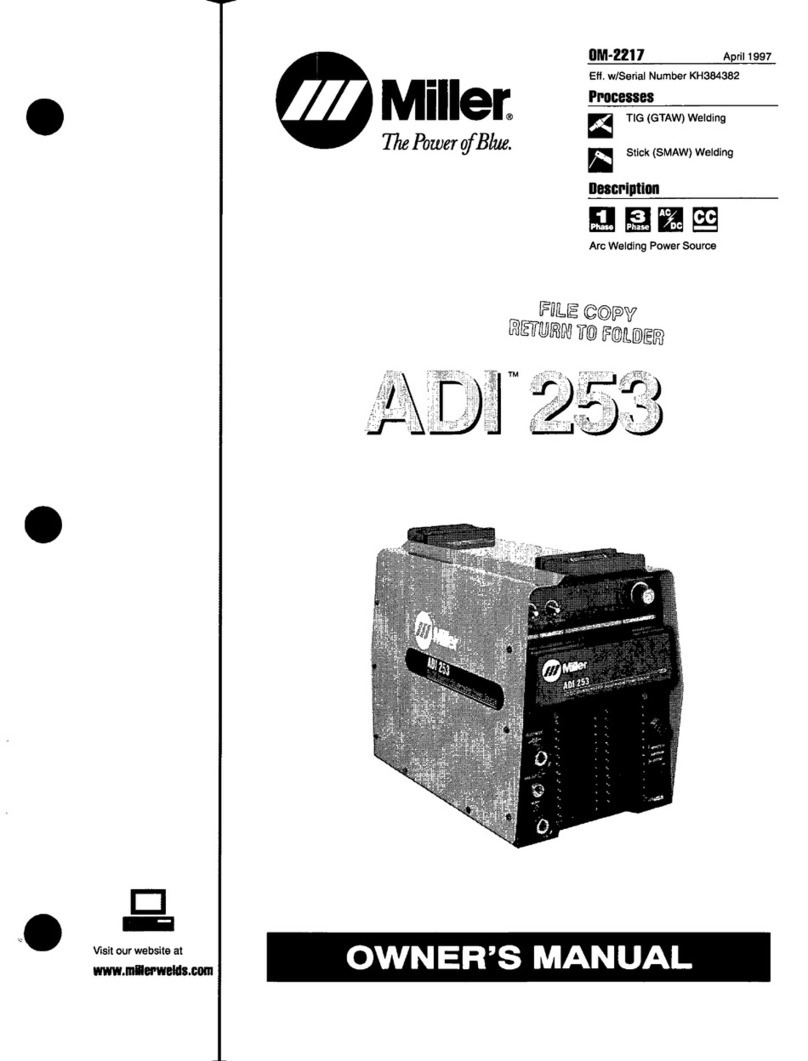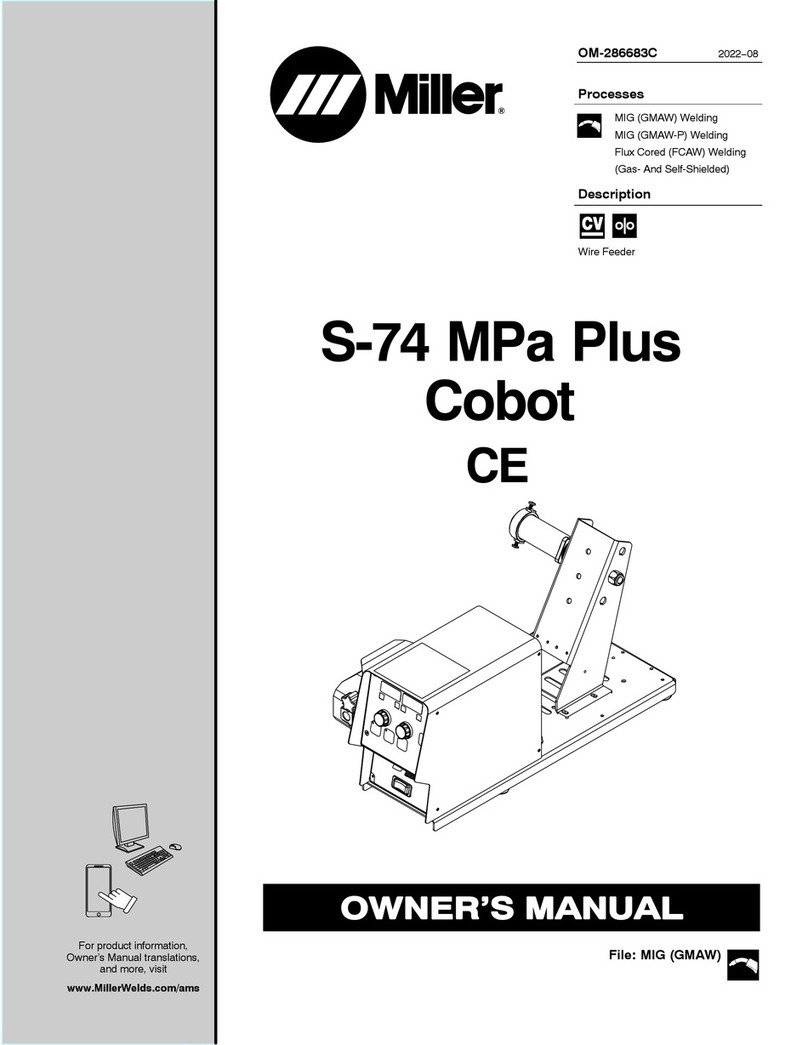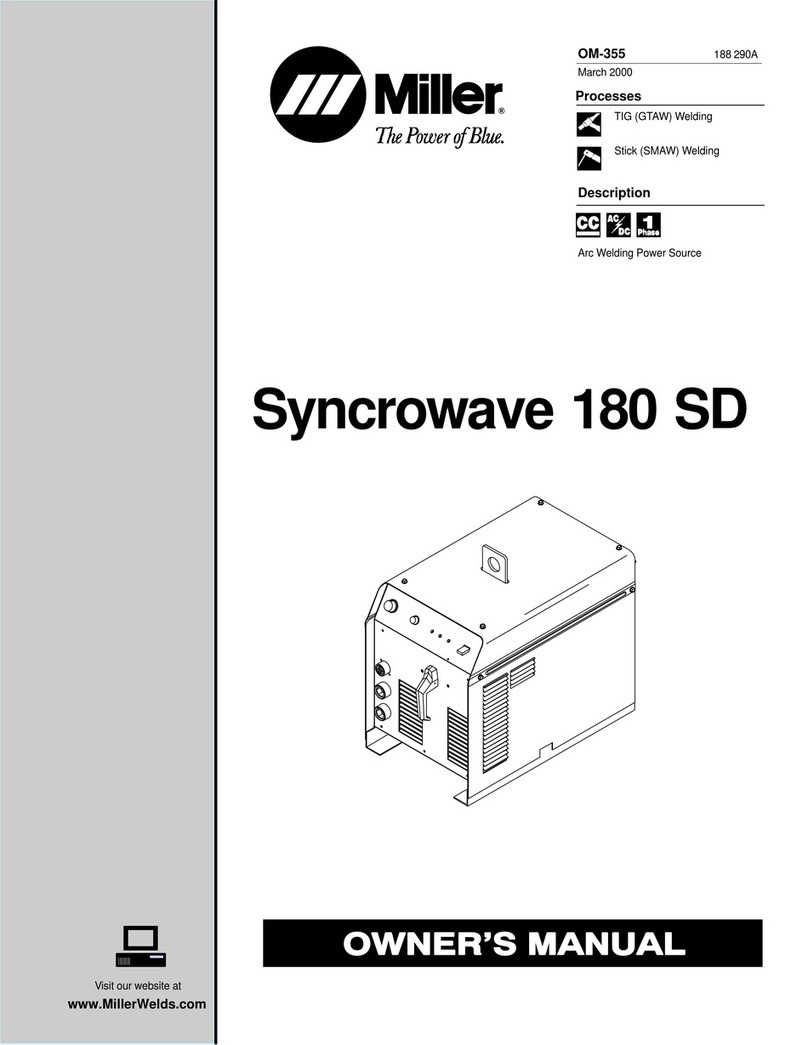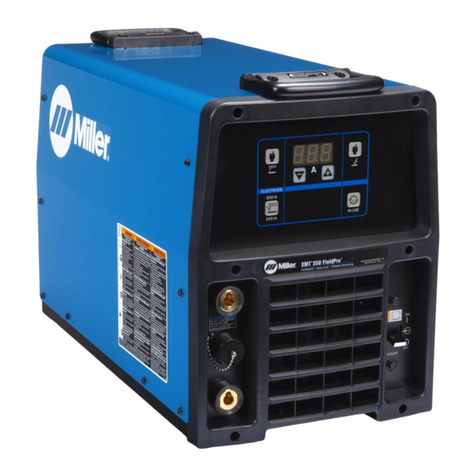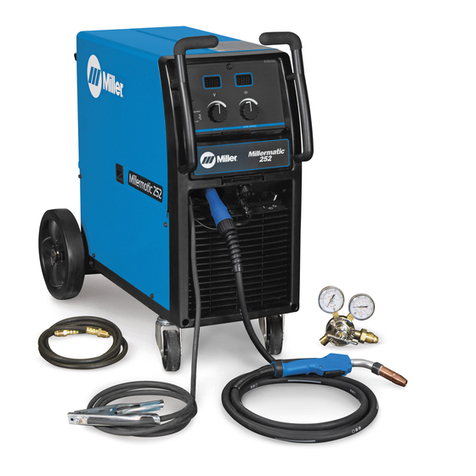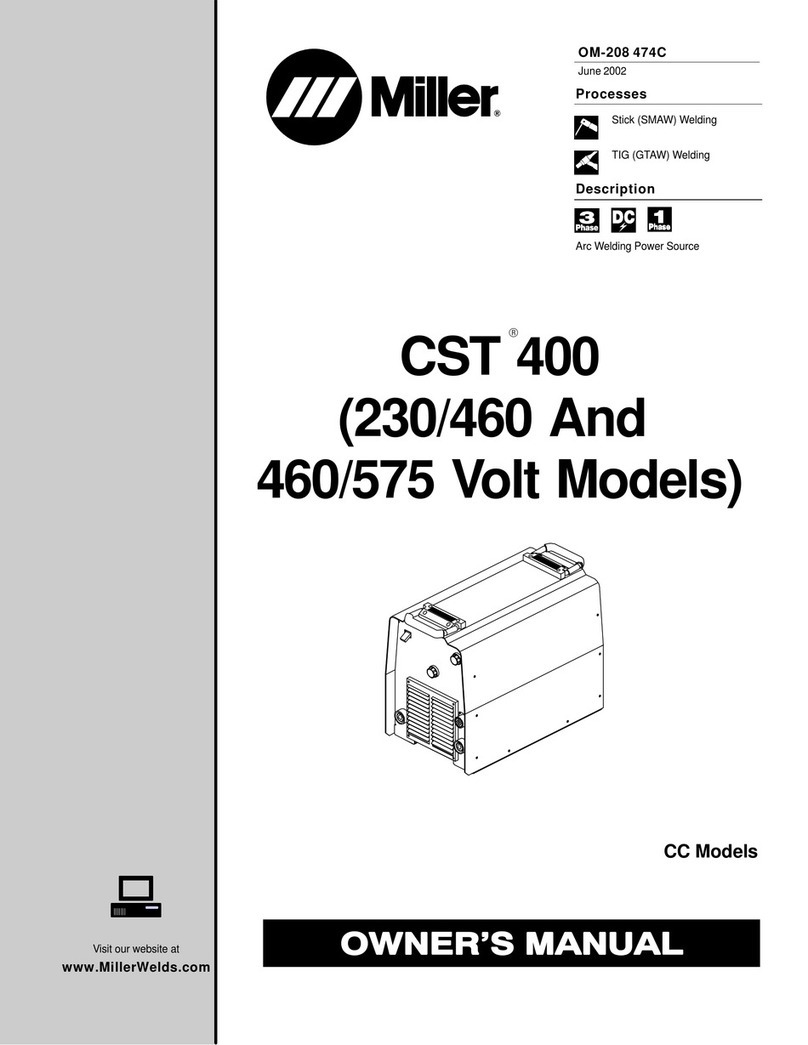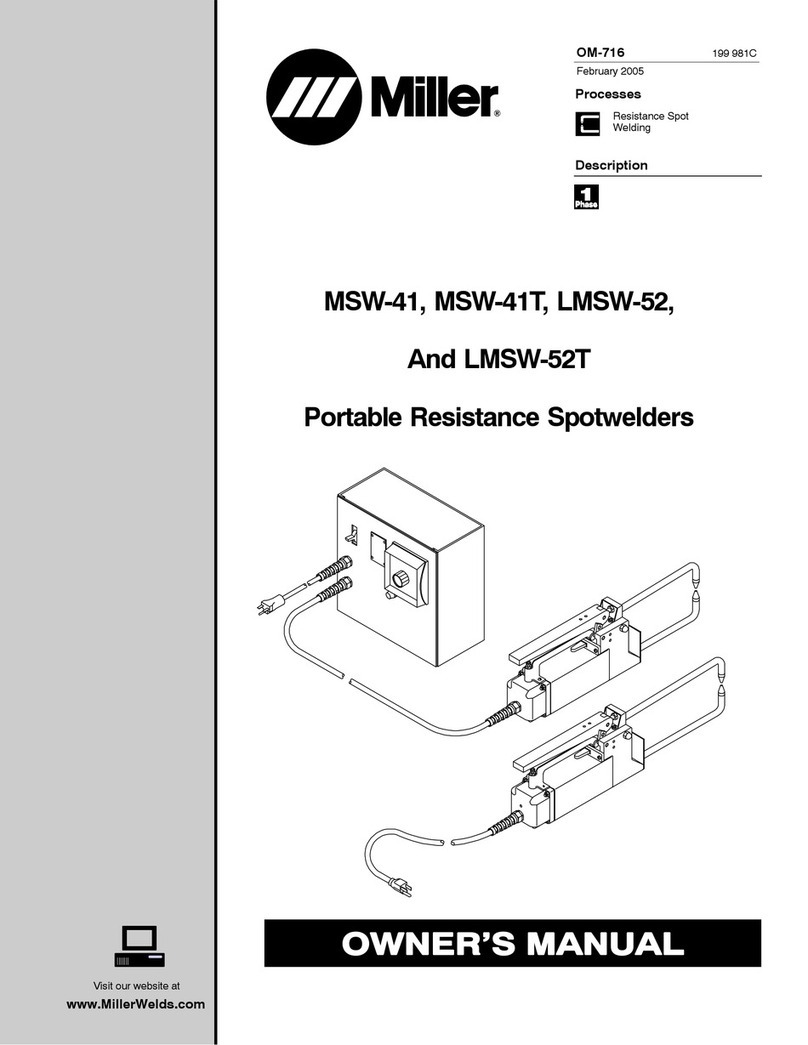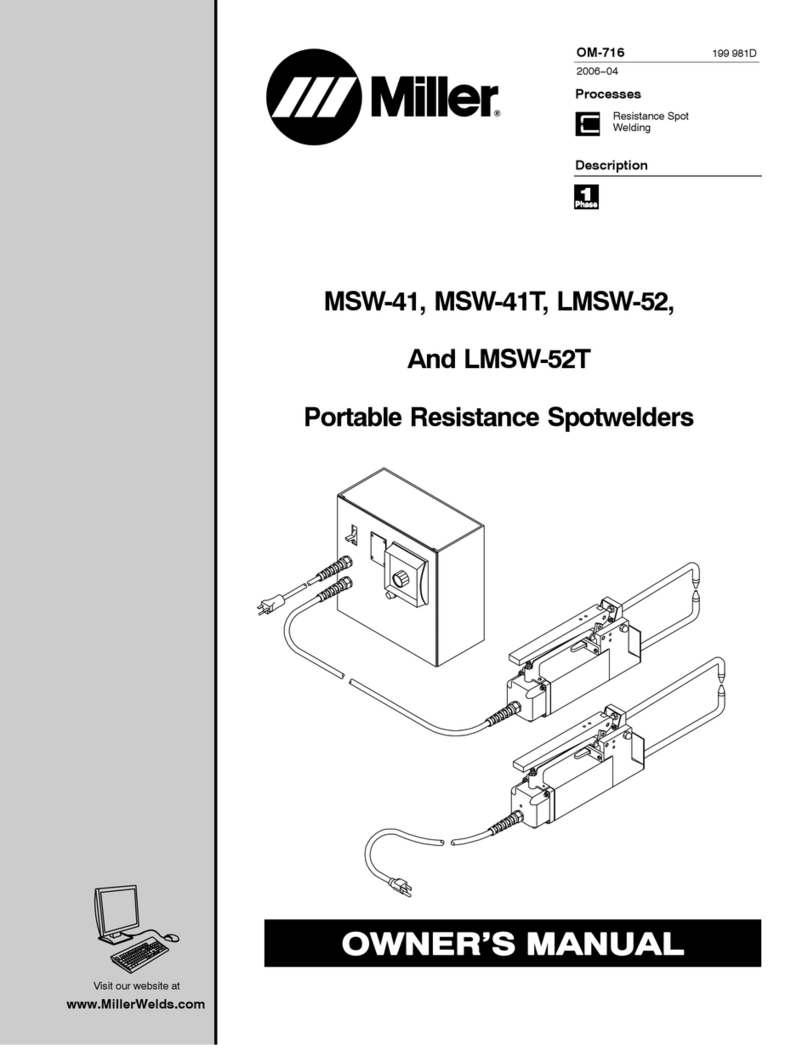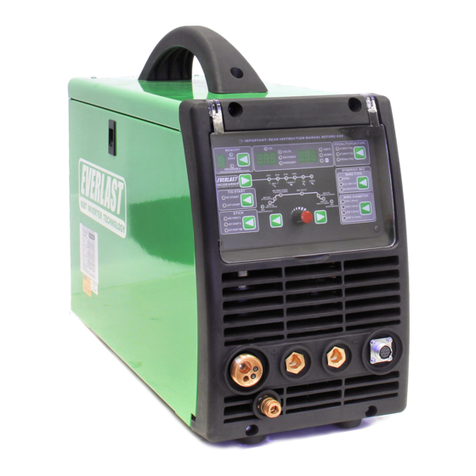
TM-257 220 Page 1XMT 450 CC/CV
SECTION 1 − SAFETY PRECAUTIONS FOR SERVICING
Protect yourself and others from injury — read, follow, and save these important safety precautions and operating instructions.
1-1. Symbol Usage
OM-257 220H, safety_stm 2013-09
DANGER! − Indicates a hazardous situation which, if
not avoided, will result in death or serious injury. The
possible hazards are shown in the adjoining symbols
or explained in the text.
Indicates a hazardous situation which, if not avoided,
could result in death or serious injury. The possible
hazards are shown in the adjoining symbols or ex-
plainedin the text.
NOTICE − Indicates statements not related to personal injury.
.Indicates special instructions.
This group of symbols means Warning! Watch Out! ELECTRIC
SHOCK, MOVING PARTS, and HOT PARTS hazards. Consult sym-
bols and related instructions below for necessary actions to avoid the
hazards.
1-2. Servicing Hazards
The symbols shown below are used throughout this manual
to call attention to and identify possible hazards. When you
see the symbol, watch out, and follow the related instructions
to avoid the hazard.
Only qualified persons should test, maintain, and repair this
unit.
During servicing, keep everybody, especially children, away.
DDo not touch live electrical parts.
DTurn Off welding power source and wire feeder
and disconnect and lockout input power using
linedisconnect switch, circuit breakers, or by removing plug from re-
ceptacle,or stop engine before servicing unless the procedure spe-
cifically requires an energized unit.
ELECTRIC SHOCK can kill.
DInsulateyourself from ground by standing or working on dry insulat-
ing mats big enough to prevent contact with the ground.
DDo not leave live unit unattended.
DIf this procedure requires an energized unit, have only personnel
familiarwith and following standard safety practices do the job.
DWhentesting a live unit, use the one-hand method. Do not put both
hands inside unit. Keep one hand free.
DDisconnect input power conductors from deenergized supply line
BEFORE moving a welding power source.
SIGNIFICANT DC VOLTAGE exists in inverter weld-
ing power sources AFTER removal of input power.
DTurn Off inverter, disconnect input power, and discharge input
capacitorsaccording to instructions in Troubleshooting Section be-
fore touching any parts.
STATIC (ESD) can damage PC boards.
DPut on grounded wrist strap BEFORE handling
boards or parts.
DUse proper static-proof bags and boxes to
store, move, or ship PC boards.
FIRE OR EXPLOSION hazard.
DDo not place unit on, over, or near combustible
surfaces.
DDo not service unit near flammables.
FLYING METAL or DIRT can injure eyes.
DWear safety glasses with side shields or face
shield during servicing.
DBe careful not to short metal tools, parts, or
wires together during testing and servicing.
HOT PARTS can burn.
DDo not touch hot parts bare handed.
DAllow cooling period before working on
equipment.
DTo handle hot parts, use proper tools and/or
wear heavy, insulated welding gloves and
clothingto prevent burns.
EXPLODING PARTS can injure.
DFailedparts can explode or cause other parts to
explodewhen power is applied to inverters.
DAlways wear a face shield and long sleeves
when servicing inverters.
SHOCK HAZARD from testing.
DTurn Off welding power source and wire feeder
or stop engine before making or changing me-
ter lead connections.
DUse at least one meter lead that has a self-
retainingspring clip such as an alligator clip.
DRead instructions for test equipment.
FALLING EQUIPMENT can injure.
DUse lifting eye to lift unit only, NOT running
gear, gas cylinders, or any other accessories.
DUse equipment of adequate capacity to lift and
supportunit.
DIf using lift forks to move unit, be sure forks are long enough to
extend beyond opposite side of unit.
DFollowthe guidelines in the Applications Manual for the Revised
NIOSH Lifting Equation (Publication No. 94−110) when manu-
ally lifting heavy parts or equipment.
